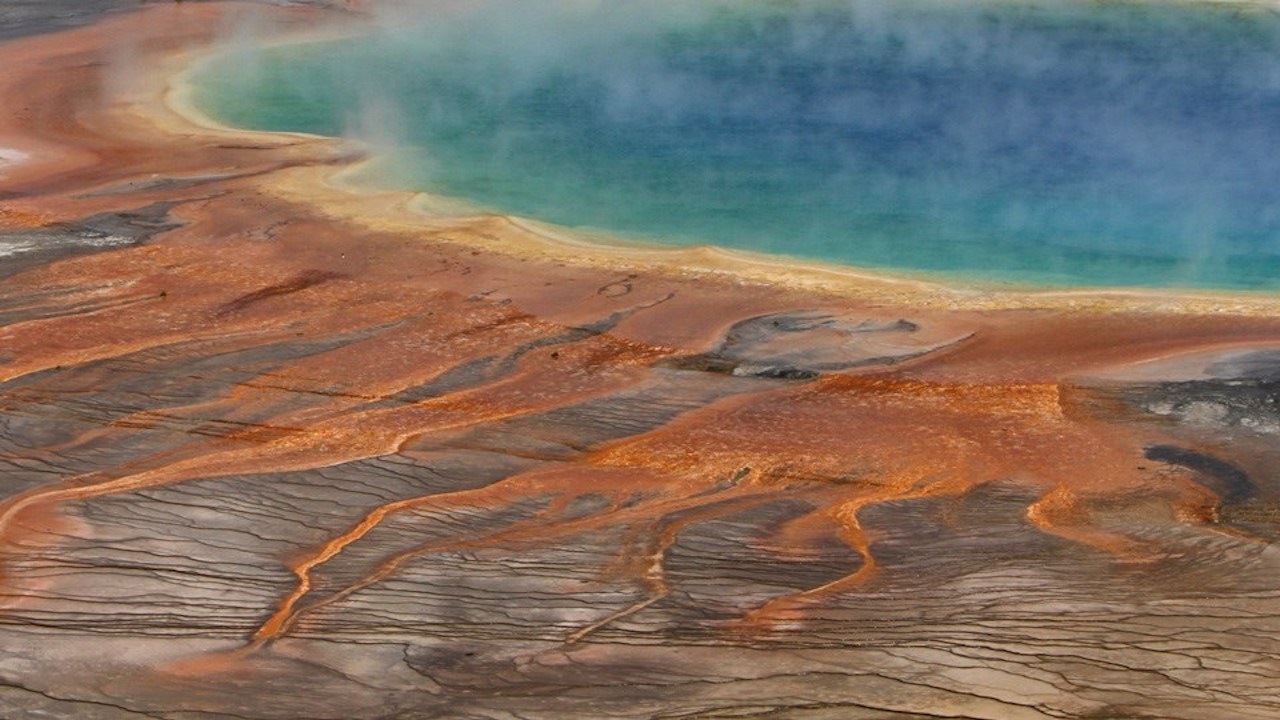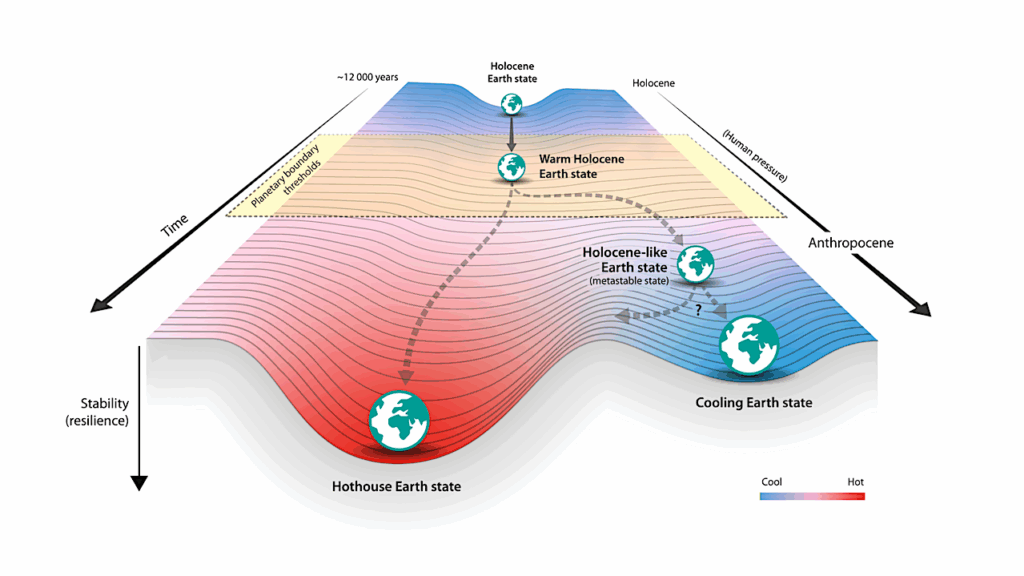How Geobiological Feedback Makes Some Yellowstone Hydrothermal Pools Acidic

Yellowstone Caldera Chronicles is a weekly column written by scientists and collaborators of the Yellowstone Volcano Observatory. This week’s contribution is from Ken Sims, Professor of Geology and Geophysics, and Cole Messa, Ph.D. student, both at the University of Wyoming.
Yellowstone National Park hosts the world’s largest and most profound example of an active continental hydrothermal system. The tens of thousands of hydrothermal features have varying sizes, shapes, and colors, and can be both acidic and basic. The pH, or acidity, of Yellowstone hydrothermal features is readily identifiable with a quick visual inspection—geysers and colorful pools are basic to neutral in pH, and muddy waters and mud pots are acidic.
What is pH, you might ask? The answer is “quite elementary,” literally—pH stands for the Potential of Hydrogen (or Protons). In practical terms, pH is a chemist’s measure of how many protons, or H+ ions, are in a substance, which indicates whether it is acidic or basic. And, as is so often typical in science, intuitively it seems backward—low pH numbers indicate more H+ ions (i.e., protons) and are thus acidic solutions, and high pH numbers indicate less H+ ions and are thus basic solutions.
Once this distribution of differing pH was recognized in Yellowstone’s hydrothermal waters—some basic and some acidic—scientists sought an explanation for it, and this intellectual quest led to a rather elegant model of how hydrothermal features form, known as “phase separation.” This simple concept is nothing more than separating the steam (gas phase) from the water (liquid phase) upon boiling, just like a pot of boiling water does on a stove top. But to understand phase separation in Yellowstone and how this process creates Yellowstone’s acidic and basic hot springs, geysers and mudpots, we need to examine Yellowstone’s hydrological (water) cycle.

Yellowstone’s hydrothermal features are tied to a reservoir of fluids deep underground that is heated by magmatic activity and recharged by rain and snowmelt from the surface. As rain and meltwater percolate into the Earth, they are superheated (their temperature rises to above what would be considered boiling at the surface), and they pick up new chemicals, such as chlorine and sulfur, from volcanic gases, as well as a myriad of other elements as they interact with the surrounding rocks.
The chemically enriched hot waters then rise back up to the surface. During ascent, the superheated water boils as pressure decreases. This boiling results in phase separation, in which the vapor and liquid separate and migrate to the surface along different paths. Again, this is akin to boiling a pot of water; however, because Yellowstone’s hydrothermal fluids rising from depth are more complex and carry chloride and sulfur compounds, it is like adding table salt (NaCl) and elemental sulfur (S) to the pot of water on the stove. When boiling this briny concoction on your stove top, the sulfur (as H2S, a gas that smells like the rotten eggs) would be separated with the steam, and the salt would stay behind in the boiling water, making it even saltier.

When these hot Yellowstone fluids boil, the liquid phase—which is neutral to basic in pH—retains most of the chloride, hence the categorical name “neutral chloride” waters. In contrast, the complementary vapor phase contains the sulfur compounds. When this sulfur-rich vapor mixes with shallow groundwater, a series of chemical reactions occurs. Importantly, these chemical reactions involve bacteria that derive their energy from sulfur, and this ultimately makes some of Yellowstone’s hot springs acidic—hence their name, “acid sulfate” features.
This process is an exceptional example of geobiology—the feedback between geology and biology—which in this case is necessary to generate the acidity. Even more amazing is that, unlike plants and blue-green algae that get their energy from the sun using a process known as photosynthesis, these sulfur-consuming bacteria are getting their vital energy by reacting with rocks—hence the term chemotrophic, or “rock-powered life,” as it is sometimes called.
The geobiological feedbacks that make Yellowstone’s waters acidic might also represent how life on Earth originated—a fact that makes Yellowstone National Park an exceptional natural laboratory for studying the origins of life not only on Earth but potentially other planets as well.
Astrobiology








